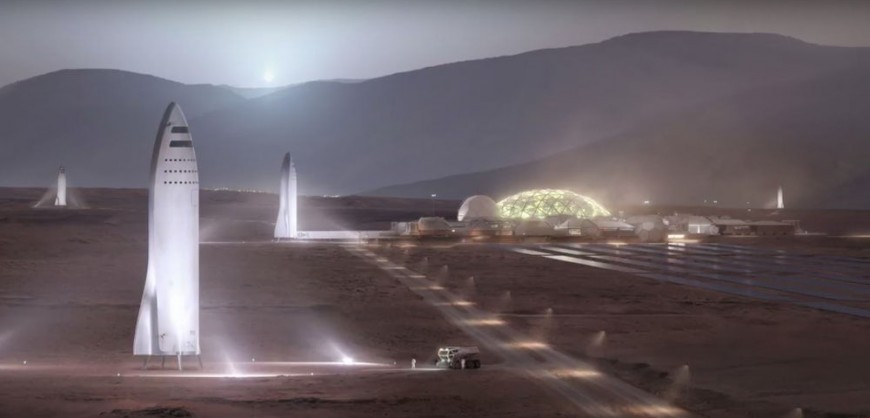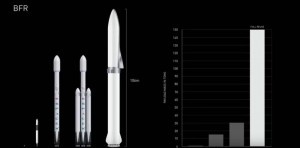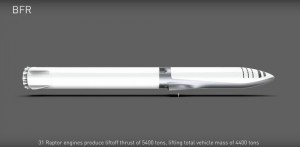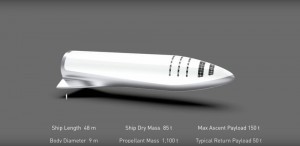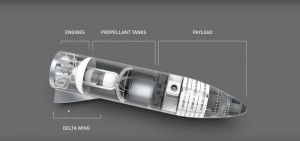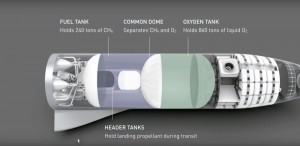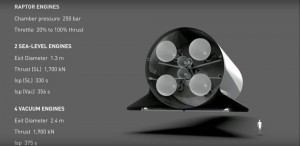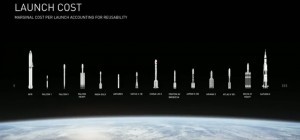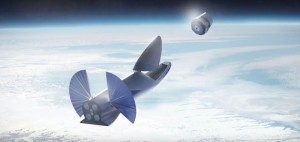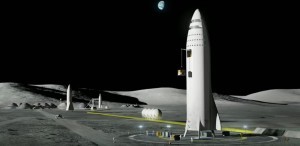Today, at the International Astronautical Congress (IAC) in Adelaide, Australia, SpaceX founder and CEO Elon Musk updated his 2016 plan to colonize Mars. The plan not only sees the establishment of a Moon base and a city on Mars within the next decade, but also much cheaper and larger payloads being sent into Earth orbit and maybe even hypersonic passenger travel.
(Click to enlarge images)
In 2016, Elon Musk made a presentation and later released a white paper in which he outlined his ideas for turning mankind into a “multi-planet species” by building a “Battlestar Galactica” style fleet of spacecraft to carry people and cargo to the Red Planet. Now, at the IAC meeting in Adelaide, he has refined his ideas that revolve around his company’s tentatively (and cheekily) named BFR booster and reusable Mars Transport.
In his presentation, Musk reiterated his argument that a completely reusable rocket that only requires refueling to fly again is much cheaper than today’s practice of disposing of boosters entirely during each flight, comparing it to destroying a multi-million dollar private plane at the end of a flight rather than just chartering a much cheaper air liner.
Musk said that part of his revised plan is based on the rapid progress that SpaceX has made in recent years with its perfection of its Falcon 9 first stage landings to the point where the next mod of the rocket will eliminate the landing legs. Another factor has been the development of autonomous systems that will allow the Crew Dragon to dock directly with the International Space Station (ISS) rather than being guided to its berth by a robotic arm like the cargo version.
The updated Mars plan uses the BFR booster, burning supercooled methane and liquid oxygen to power 31 Raptor engines punching 5,400 tons of thrust, allowing for a total vehicle mass of 4,400 tons.
The Mars Transport itself is a reusable cargo/passenger interplanetary spaceship and lander with a length of 48 m (157 ft) and a diameter of 9 m (30 ft), a ship dry mass of 85 tons, a propellant mass of 1,100 tons, an ascent payload capacity of 150 tons from Earth, and the ability to return with a payload of 50 tons. This craft would be able to refuel in orbit and set out to Mars with full tanks.
Encased in a reusable heat shield, the Transport is powered by six Raptor engines – four engines configured for use in vacuum with two configured for sea level pressure. Musk says that there is enough redundant capacity for the Transport to land on only one engine. Inside, there’s a common fuel/oxidizer tank with header tanks for precise control, and at the stern of the ship there are prominent delta wings with control surfaces to allow the ship to operate on more than one planet.
The Transport’s payload section has a volume of 825 m³ (29,135 ft³), or greater than that of an A380 aircraft. This will allow the passenger version to carry 40 cabins with two to five passengers each for a total of 80 to 200 passengers, in addition to having common areas, cargo holds, a galley, and a solar storm radiation shelter.
Musk also revealed his concepts of what he calls Moonbase Alpha, a reference to the eponymous setting for the Space:1999 television series, and Mars City. He plans to set up the core of the latter starting in, hopefully, 2022 with a six-ship fleet consisting of four transports and two manned ships, with two unmanned transports landing with supplies and fuel-generating gear to be met by the rest of the fleet when Mars comes back into a favorable orbital position two years later.
One of Musk’s big updates is that he plans to pay for the Mars missions by making the BFR SpaceX’s standard booster and the Transport the standard vehicle – replacing all the other Falcon marks as well as the cargo and crew Dragons. Musk said that ideas like Kickstarter and collecting underpants didn’t pan out, but that the company is opting for a Transport vehicle that is multipurpose, so it can be used to carry either a single large payload the size of the Hubble Space Telescope into orbit, or many smaller payloads. This means that all of SpaceX’s resources can be focused on Mars when the time comes.
Musk also sees the BFR and the passenger version of the Transport as making passenger hypersonic travel practical with vertically launched rockets leaving from, for example, New York Harbor and landing on a barge in Shanghai 30 minutes later.
Musk says that his vision is more than just a concept on paper, with the components for the first ship already on order and assembly scheduled to begin next year.
Elon Musk’s live stream talk can be seen in the video below.
Source: newatlas

